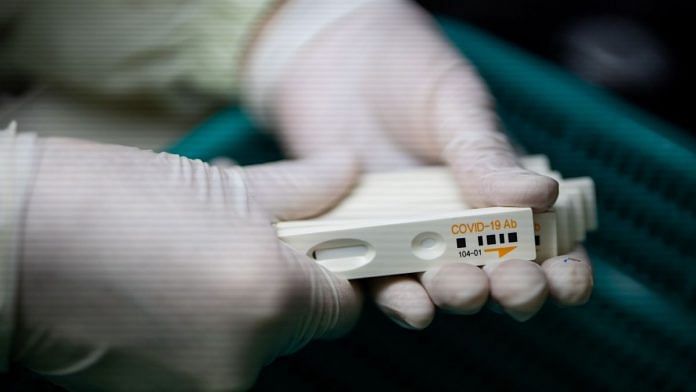New Delhi: The novel coronavirus pandemic continues to devastate several countries and has so far claimed over 3,57,807 across the world. Scientists continue their quest to better understand the virus to develop more effective treatment plans.
Here are some of the recent research findings around Covid-19.
AI can identify Covid-19 patients from their chest X-rays
A team at Cranfield University in UK has designed an artificial intelligence algorithm that can identify Covid-19 in chest X-rays.
The model can identify information that would not normally be recognised with the naked eye and can assist with the diagnosis of the coronavirus infection.
The AI is able to detect anomalies in an X-ray that indicate pneumonia — a common symptom of Covid-19. A second model is then used to diagnose if the pneumonia is caused by SARS-CoV-2.
The team used deep learning frameworks that teach computers to learn by example from existing data. While the team believes that their AI model is able to predict results accurately, they are working on the algorithms to further improve its reliability.
Two new drugs identified that may stop SARS-CoV-2 from replicating
Scientists have identified two new drugs that can possibly stop the replication of coronavirus.
The study used computational screening and found that human and a veterinary anti-inflammatory drug — Carprofen and Celecoxib — can inhibit a key enzyme in the replication of SARS-CoV-2.
The researchers analysed over 6,466 drugs authorised by various drug agencies, for both human and veterinary use.
They found that seven of these 6,466 drugs may inhibit the enzyme known as M-pro or main protease, which is responsible for generating a number of proteins that are essential for the reproduction of the virus.
Carprofen and Celecoxib, out of these seven compounds, were tested in the laboratory and both demonstrated an ability to inhibit the activity of M-pro.
Saline solution can be used to store, transport infected Covid-19 samples
A simple salt solution commonly found in hospitals and clinical laboratories can be used as a medium to reliably transport coronavirus-contaminated specimens to testing laboratories.
Clinical specimens suspected to contain viruses are usually shipped to testing laboratories in a mixture called virus transport medium (VTM). The pandemic has led to a shortage in the availability of VTM — contributing to delays in diagnosis and rationing of diagnostic testing.
Since the SARS-CoV-2 viral RNA can remain stable on certain surfaces for up to 72 hours, scientists at Rutgers University hypothesised that phosphate buffered saline (PBS), which is inexpensive and commonly available in clinical settings, could be used instead.
For the study, researchers tested discarded respiratory secretions from 16 confirmed Covid-19 patients. Swabs were dropped into vials containing either PBS or VTM and transported to the laboratory for analysis using real-time PCR (RT-PCR) testing to detect the presence of three specific SARS-CoV-2 virus genes in the samples.
The research showed that PBS was a dependable transport medium for viral samples.
‘Silent’ Covid-19 infections may be more prevalent in closed cruise ships
The prevalence of ‘silent’ or symptomless Covid-19 infection in closed cruise ships may be much higher than thought, according to a study that has implications for the easing of lockdown restrictions.
The research, published in the journal Thorax, analysed the infection spread among 128 passengers and 95 crew members in a cruise ship.
More than eight out of 10 passengers and crew members who tested positive for the infection had no symptoms.
The first case of fever was reported on day 8, after which infection control measures were taken. Passengers were confined to their cabins, daily servicing, barring delivery of meals, was stopped.
Any crew member in contact with sick passengers wore personal protective equipment.
Eight passengers and crew eventually required medical evacuation to hospital at this point for respiratory failure. On day 20, all the remaining 217 passengers and crew were swab tested for coronavirus.
More than half (128) tested positive. Of these (81 per cent) had no symptoms.
The ship had no contact with other people for 28 days after its departure, so was the equivalent of a hermetically sealed environment.
The study authors conclude that the prevalence of Covid-19 infection on cruise ships is likely to be “significantly underestimated”. They recommend that passengers should be monitored after disembarkation to ward off potential community spread of the virus.



